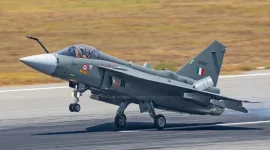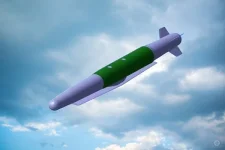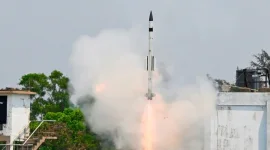- Views: 521
- Replies: 11
India's Defence Research and Development Organisation (DRDO) is working on a new technology called an "Ejectable Rocket Ignition System."
This innovative project aims to significantly enhance the capabilities of the Pinaka MkIII, the next version of India's domestically produced multi-barrel rocket launcher (MBRL) system.
The development is being led by DRDO's Armament Research and Development Establishment (ARDE) located in Pune, showcasing India's continued efforts to advance its defence technology and strengthen its artillery forces.
While precise technical details about the ejectable system have not been released, its primary goal is expected to be the refinement of how the Pinaka MkIII rockets ignite. This could lead to more consistent and controlled rocket propulsion.
Unlike traditional ignition systems that remain part of the rocket, an ejectable system would likely detach after launch. This separation could offer several advantages, such as reducing the rocket's weight during flight, potentially leading to better fuel efficiency and allowing for a greater range or a larger payload.
Furthermore, such a design could improve safety during handling and storage and critically enable faster reloading times in battlefield conditions, supporting the Indian Army's plans for an Integrated Rocket Force.
The Pinaka MkIII rocket system itself is currently reported to be in the manufacturing stage. It is being designed with the ambition to surpass existing systems like Russia's BM-30 Smerch. The MkIII will utilize solid-fuel 300mm rockets intended to carry various types of warheads over considerable distances.
Integrating the new ejectable ignition system is part of a wider DRDO initiative to incorporate advanced features into the Pinaka platform, which also includes guidance kits, systems for trajectory correction, and research into ramjet propulsion technology in collaboration with IIT Madras.
These combined efforts are aimed at ensuring the Pinaka MkIII not only meets its target range of over 120 kilometres but also delivers accuracy and flexibility in diverse combat situations.
The project is being pursued actively, indicating its importance, although a specific completion date has not been announced. Based on DRDO's past pace with Pinaka enhancements, trials for the new ignition system might occur within the next six months.
Future dynamic testing will be crucial to confirm the system functions correctly during high-speed launches, ensuring it works seamlessly with the Pinaka MkIII's expected high velocity (potentially up to Mach 4.7) and operational altitude (up to 40 km).
The successful development of this technology would represent a significant step forward for India's indigenous artillery capabilities.







